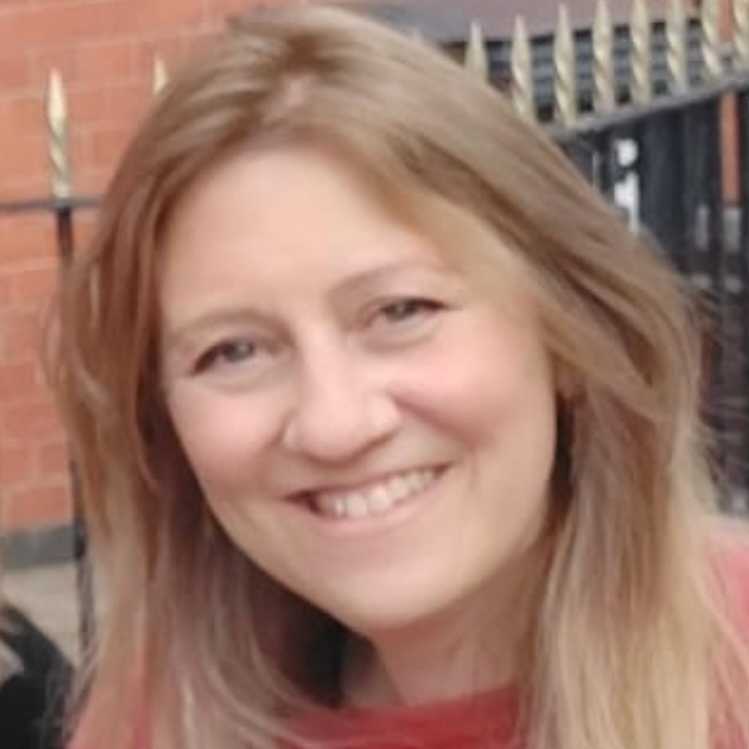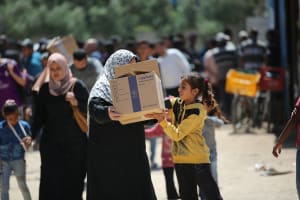Health workers killed by IDF in Lebanon linked to Amal militia group
Five of six killed workers were buried with Amal flags

The Israel Advocacy Movement has uncovered information linking six healthcare workers who were killed in an Israeli operation in the Tyre district of Lebanon with the Lebanese Shi’ite militia group, Amal.
The workers were identified as Bassam Muhammad Hassan al-Moussawi, Muhammad Hassan Nazzal, Hassan Nimr Issa, Abdullah Muhammad Hassan al-Moussawi, Ali Samir Najdi and Joseph Gerges al-Badawi. Five of the six were buried with the flag of the Amal movement on their coffins, while al-Badawi, a Christian, had been photographed raising an Amal flag.
The CIA has identified Amal as the military and political wing of Lebanon's Higher Shite Council. The word Amal means “hope” in Arabic, and is an acronym for “Lebanese Resistance Regiments.”
Amal was founded in 1974 in an attempt to reform the Lebanese political system and evolved into a military wing the following year. The group today mainly functions as a political movement, but continues to operate a military wing that has taken active part in the fighting against Israel next to fighters of its ally, Hezbollah.
The Israel Advocacy Movement revealed that both al-Moussawi and Nazzal were identified as Amal militants, with al-Moussawi specifically named as the leader of a terror cell.
Israel was accused of targeting a church and health workers in Derdghaya, Lebanon.
— Israel Advocacy Movement (@israel_advocacy) October 11, 2024
In reality, the IDF was targeting militants from the AMAL Movement and we can prove it. pic.twitter.com/kaYNGAz0FO
Ynet News reported that other members of Amal were also been eliminated in an Israeli strike on a house in the village of Beit Lif in southern Lebanon. Lebanese media named Hassan Hussein Sukeiki, Jaafer Amin and Hussein Ali Azam as having been eliminated, along with two other members, Ali Khalil Mahmad and Mustafah Abbas Dahr, from the town of Blida, whose funeral was accompanied by chants of "Death to Israel.”
The Hezbollah-affiliated newspaper Al-Akhbar confirmed the connection following the spread of reports that the five Amal members had been killed, saying Amal had "its blood firmly within the confrontation."
Amal reportedly serves as a “primary defensive shield” against Israel, placing members along the border, but, unlike Hezbollah, claim not to be subservient to Iran. However, a CIA report indicates that the group's “principal foreign support comes from Libya and Iran.”
The primary concern for Amal is Lebanese land – not the Palestinian cause or the reclaiming of Jerusalem, in contrast to Hezbollah. While the Hezbollah terror group lauds the death of its operatives as "martyrs on the path to Jerusalem," the Amal movement declares its fighters as having died "as martyrs defending Lebanon and the south," according to a recent article in "Al-Quds Al-Arabi." The distinction allegedly enables them to maintain public support while support for Hezbollah has waned.
Ynet quoted an unnamed source inside the Shi'ite faction saying that while the two groups share "a strategic and military vision," Hezbollah is part of the Axis of Resistance, while Amal is more locally focused on defending lands in southern Lebanon.
This distinction could be part of the reason that some Lebanese Christians have chosen to align themselves with Amal's goals and activities, including members of a church in Derdghaiya which was damaged in the strike on an adjacent mosque that was loaded with weapons. The church had allegedly repeatedly honored Amal founder, Musa Al-Sadr, according to the Israel Advocacy Movement.
However, in a recent speech, Hezbollah’s Deputy Sec.-Gen. Naim Qassem linked the two causes, saying they were “in full agreement, through thick and thin.” He referred to Nabih Berri, the leader of the Amal movement since 1980 and Speaker of the Parliament of Lebanon since 1992, as Hezbollah’s “Big Brother” in helping Palestinians "liberate" their land.
Berri has represented Hezbollah in the U.S.-led talks regarding a ceasefire and diplomatic arrangements over the past months.
IDF International Spokesperson Lt-Col. Nadav Shoshani stated: “It is unfortunate that since 2006, UN Security Council Resolution 1701 has not been fully enforced and that Hezbollah violated it by establishing an extensive militarized presence in southern Lebanon requiring the IDF to operate against Hezbollah’s weapons, assets and personnel in the area. The IDF remains committed to protecting Israeli communities along the border and will continue to engage with all relevant stakeholders to ensure the safety of civilians and peacekeepers in this volatile region.”
The identification of the six health workers as having ties with Amal is another example of the blurred lines between terrorists and civilians, one of Israel’s main military challenges both in Gaza and in Lebanon in the war precipitated by the Oct. 7 massacre in southern Israel.

Jo Elizabeth has a great interest in politics and cultural developments, studying Social Policy for her first degree and gaining a Masters in Jewish Philosophy from Haifa University, but she loves to write about the Bible and its primary subject, the God of Israel. As a writer, Jo spends her time between the UK and Jerusalem, Israel.













